Make My Own Design on T Shirt Mass Prints
It's stained, it's ripped, it's full of holes… But you just can't seem to throw it out. For a lot of us, our favorite t-shirts are a way to express who we are. (And for others, they're free advertising!) But how to design a t-shirt that ticks all the boxes? You'll find out below.
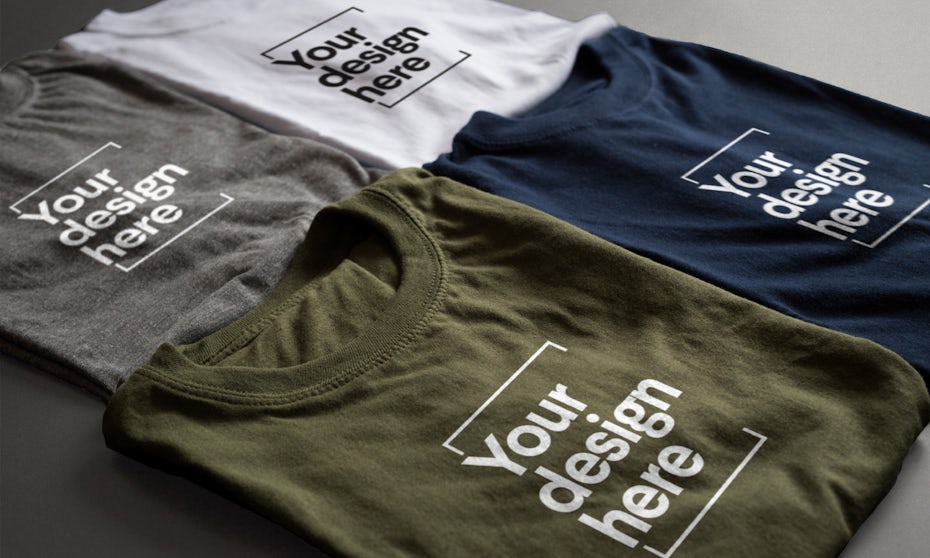
Do you have an killer t-shirt idea and suspect others will feel the same way? Are you looking for an alternative means of promoting your business, or making some side income with merch? Do you want to commemorate a special event, like a family reunion or bachelorette party?
We've just sent you your free t-shirt design ebook.
Whatever your reasons, the fundamentals of t-shirt design remain the same; it's what you do with them that counts.
In this Ultimate Guide to T-Shirt Design, we'll run through the each step of the design process, from the inception of an idea to getting your shirt mass-produced. No matter how much (or how little) experience you have, these t-shirt design tips will give you everything you need to know.
How to design a t-shirt in 7 steps
—
- Figure out why you need a shirt
- Define your budget at quantity
- Know your printing options
- Screen printing
- Vinyl graphics
- Direct-to-garment
- Brainstorm your design concept
- T-shirt types
- Style and imagery
- Typography
- Color
- Specialty printing
- Find a designer
- Evaluate your design
- Get the right files
- Find a kick-ass printer
1. Figure out why you need a shirt
No matter your reason for designing a t-shirt, it'll always involve a little bit of branding. If you're using t-shirts for promotional purposes, branding is your main goal. Even if it's strictly fashion, you'll still need to weave consistent brand themes into all your products. For personal use—like commemorating an event, for example—you want to make sure your t-shirt design communicates clearly.
If you haven't already, write out a list of the key themes, styles, and personality traits you want your brand and shirts to convey. Is your brand playful or serious? Edgy or conservative? Luxurious or affordable? A focused t-shirt design can answer all of these questions at a glance.
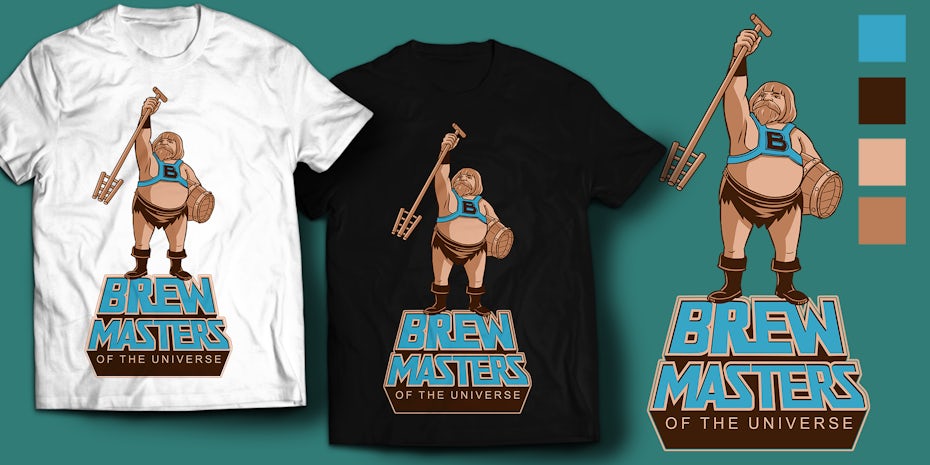
Take a quick peek at the example above. What does it tell you about the Brewmasters company? For starters, they don't take themselves too seriously, and the wooden instruments suggest a more traditional brewing style that hints at a classic taste. That's a lot of information from a cartoon.
To get the most effective design, move away from your personal preference and rely more on real, quantifiable data. Who are your target clients/customers? What brand traits do they want to do business with?
Here are four goals to help guide your t-shirt design process by helping you understand why you need a shirt and what you want it to do.
Promotional gifts
Your t-shirts are something you give away for free to keep your brand in the minds of prospective clients/customers.
This could be something given away at conventions, conferences, other promotional events or even a leave-behind at a business meeting.
Internal company usage
Employees get shirts for solidarity, appreciation or perhaps even a company uniform.
The goals are similar to promotional gifts because there's a strong need for branding.
Merchandise
Your t-shirts are a product you plan on selling, so make sure to factor in style, marketability and business strategy.
You'll need to understand your shirt's place in the market, so consider conducting research to discover the tastes of your customers. Your own personal tastes are a good start, but when it comes down to selling to the masses, quantifiable data always beats guesswork.
Event souvenirs
Special events need special souvenirs, and t-shirts are always a great option.
These share many of the same goals as shirts for internal company usage (solidarity, appreciation) but for a more casual, less restrictive audience.
Regardless of their use, most t-shirts are promotional in some way. Even if you're designing t-shirts as merchandise, include your brand logo so observers know who made the shirt if they want something similar. It should have a strong, even dominant, presence on the shirt.
Apply the same design quality and cleverness as you would a billboard advertisement. More than just clothes, t-shirts provide exposure every time a person wears them in public, especially if the owner likes the shirt and wears it often.
Once you've determined your goals, you can then prioritize the different aspects of your t-shirt design. For example, fashion might be a high priority for merchandise tees, but not for employee gifts. You want to tailor your design in a way that best suits your needs.
2. Define your budget and quantity
You're anxious to get to the actual t-shirt designing. We get it. But let's settle some details first so you can focus your design better: namely, your budget and quantity. How much you can spend and how many t-shirts you need will impact your design.
For example, budget and quantity will help determine how many colors you can use. Depending on your printing method, additional colors may cost more money. If your budget is tight, a good way to save is conserving colors.
The number of shirts you need will also influence your printing method. Some methods are ideal for printing in bulk. Others have a higher cost per shirt and are better for small orders.
Before you begin to think about designing or printing, plan your budget and quantity accordingly.
3. Know your printing options
There are a lot of things to consider when you're looking for the best t-shirt printing method for you. Cost, appearance, production time, materials—they're all important. The more you know about each method, the easier it will be to decide which one is best for you.
Screen printing
This is the gold standard for t-shirt printing. Your printer makes original screens of your design (one for each color) so you can print in bulk.

Pros : Reliable standard for printing. Affordable and high quality. Ideal for large orders over 20.
Cons: New screen required for every new color or design revision (which gets costly). Colorful designs end up being expensive.
Vinyl graphics
Another method of heated transfer, vinyl printing uses more durable vinyl instead of just ink.
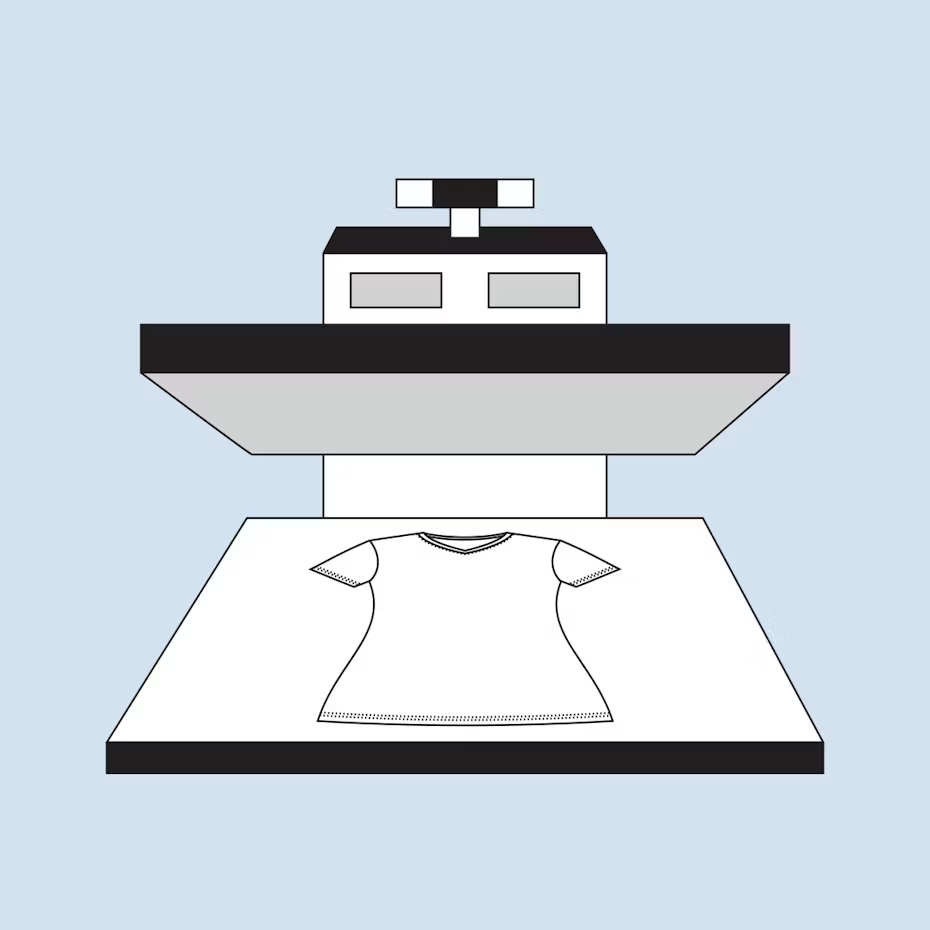
Pros: Extremely durable and high quality. Ideal for when you want your design to stand out (literally).
Cons: Additional colors cost more, so complicated designs get expensive. Not great for large orders.
Direct-to-garment (or print-on-demand)
A newer option, DTG printing uses the freedom of inkjet printing, but prints directly on fabric.
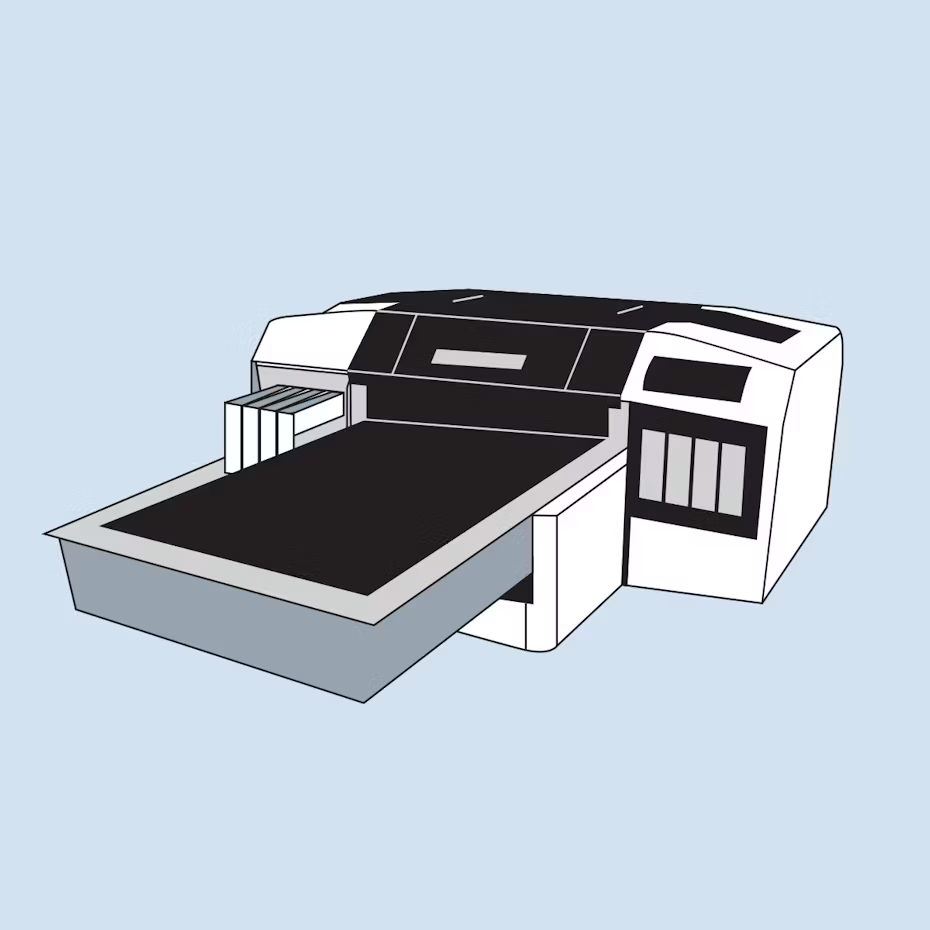
Pros : Highly customizable designs with maximum detail and extensive color choices.
Cons : Use for small batches or perhaps a single sample. The more you're printing, the less viable it becomes. Doesn't work well on dark-colored garments.
Take a look at our guide to t-shirt printing for more information.
4. Brainstorm your design concept
Here comes the fun stuff… Now you get to start figuring out what's actually going on your t-shirt! Make sure you don't jump to this step first. The more time and effort you put into preparing for this, the better.
Your design could go in a million different directions. As you're brainstorming, here are some tips to help focus your creativity.
T-shirt types
All this talk about t-shirts, and it's easy to forget that there are lots of different types of shirts. Just to name a few…
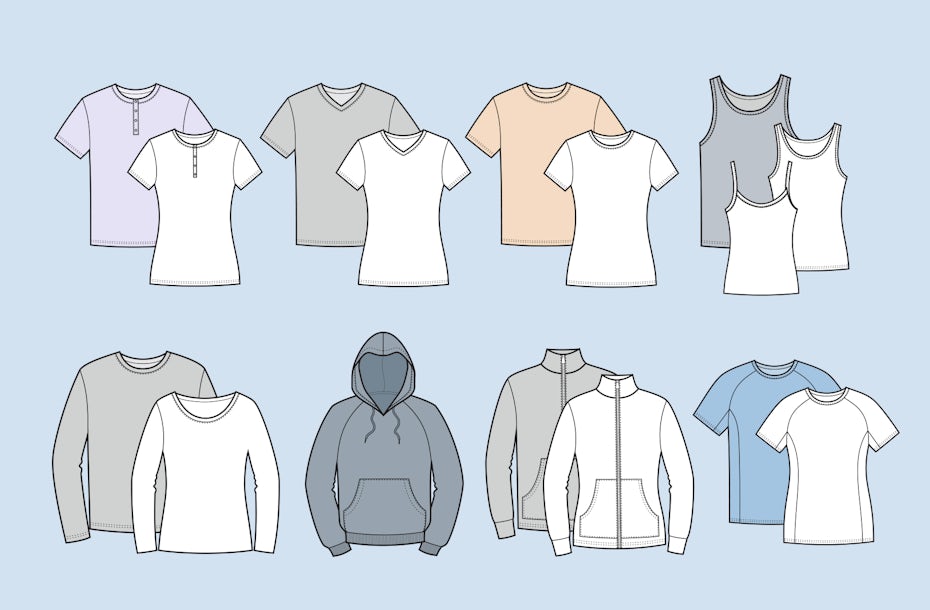
Think about your audience and intended goals before deciding the right type of t-shirt. A revealing crop top might not be the best promotion for a law firm.
As you start sketching out t-shirt design ideas, make sure it will translate to the actual size. Design using an 18"x18" canvas and physically place your designs on a shirt. That doesn't mean you have to fill the whole space (like if you're keeping it minimal with a small logo), but a realistically sized canvas will help you get the proportions right.
Once you have your design, consider how it will look on larger and smaller shirt sizes. If you choose a screen printing process, different sizes may require different screens, which means additional costs.
Style and imagery
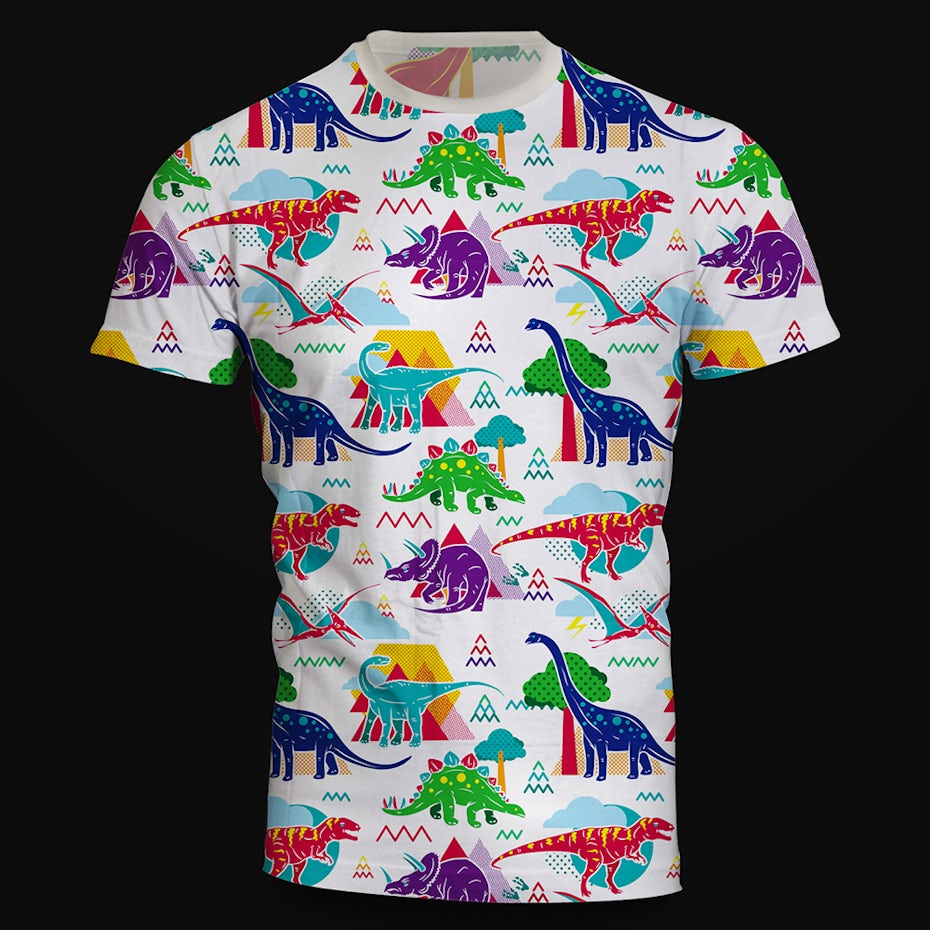
At this stage, you have to rely on your creative and artistic instincts to communicate the messages you want to say. Don't forget these questions we talked about before:
- What is your brand?
- Who is your market?
- Why are you designing a shirt in the first place?
Put all of that together, and you're ready to start designing a t-shirt that's perfect for you.
For example, take a look at Prim's dinosaur t-shirt design. This is a kid's merchandise brand, so the style is cute and cartoony, appealing to its market.
Compare that to the winning entry for the Pumpkin t-shirt design contest, by 99designs creator DiditRed.
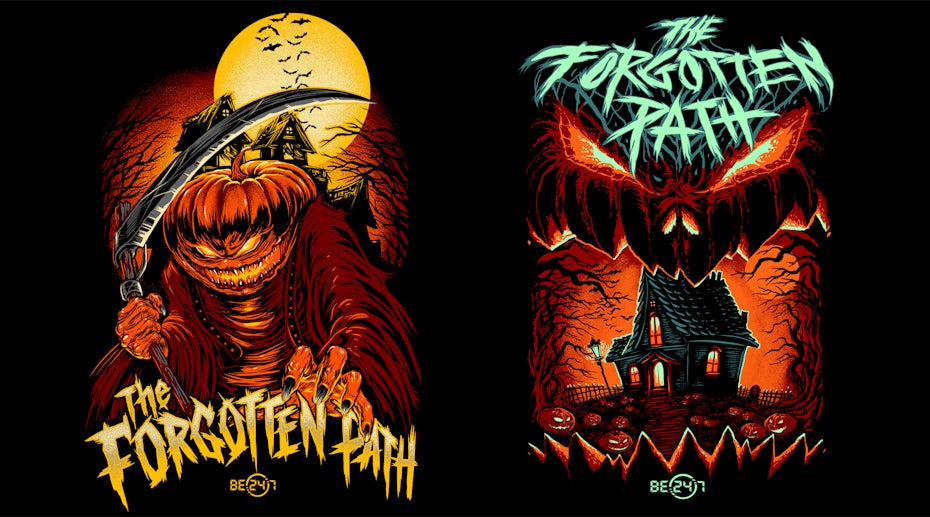
This German hardcore music festival is definitely not marketed to kids. That opens up their designs to edgier material, which suits their prospective clients better.
Of course, there are more options than being terrifying or sugary sweet.
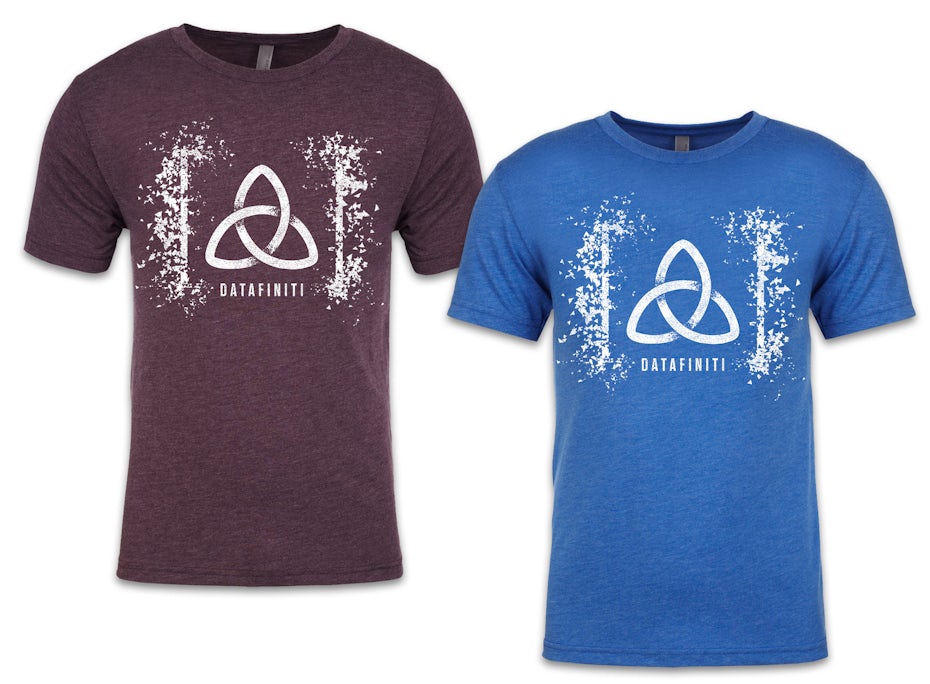
Alex Lalove shows us how to design a professional, risk-free t-shirt without being boring. His winning entry promotes the Datafinity brand with its logo front and center, but spices up the look and feel so it seems more fashionable than a standard business tee.
Also, remember that your design is being displayed on bodies. Lumpy, bumpy bodies that aren't always as symmetrical as we'd like. Think about flat, uncomplicated designs since there's no telling where the nooks and crannies will land on your image.
For similar reasons, you also want to avoid detailed imagery, such as subtle color gradients and intricate linework. Always err on the side of simple.
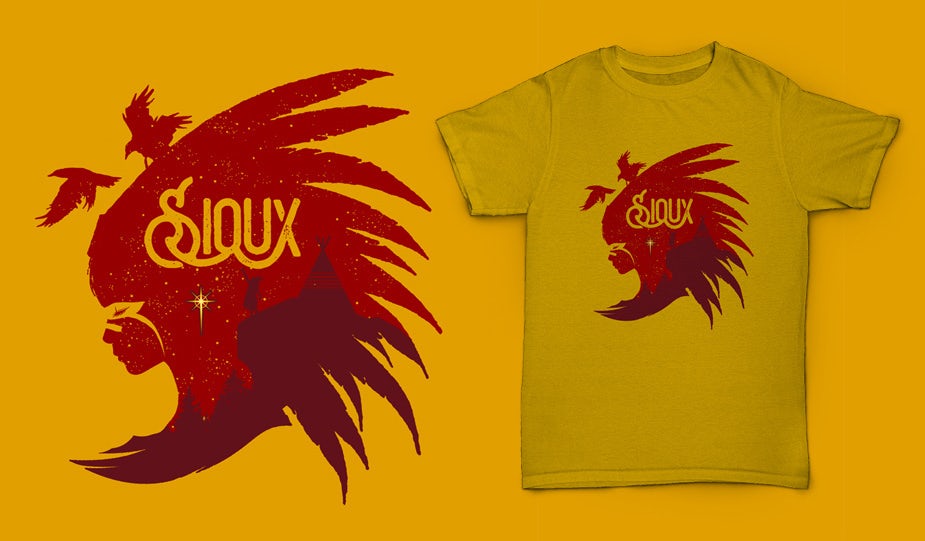
T-shirt typography
The fonts you choose say a lot about your brand. Serif fonts (the ones with little arms) or script fonts look more classic. Sans-serif fonts make it more modern. T-shirts offer more of an opportunity than other areas of graphic design to play with fun, crazy display fonts, but do keep readability in mind. If the words on your shirt are important to communicating your message, make sure they don't get overshadowed by swirly, grungy, loopy typography.
Color in t-shirt design
The element of design that is best at instantly communicating personality is color. Each shade, hue and tint evokes an emotion, acting as a shortcut for you to portray something about your brand at just a glance.
T-shirt designs have two sets of colors to keep in mind: the fabric color(s) and the print color(s).To make sure that these two complement each other, always use your fabric color as the background of your design ideas. (And also note that a colored canvas can have an impact on what inks look like, so make sure you talk to your printer about that!)
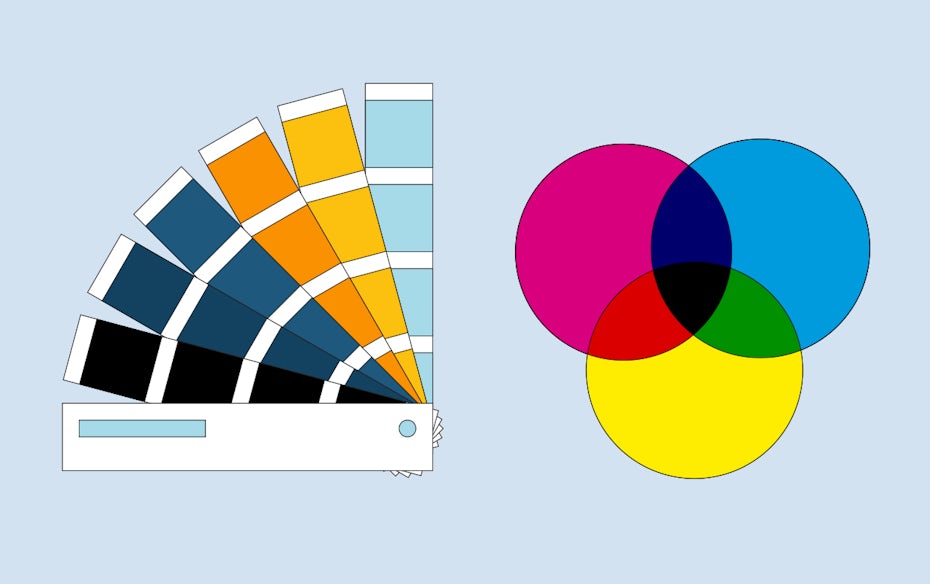
Because of the way t-shirt inks work, printing colors can get a little tricky. The least expensive way to print your design will be to approximate the colors. Just know that your "teal" might not match your printer's "teal."
Exact color matches are possible with Pantone (PMS) or custom blended CMYK inks—but they're more expensive. PMS uses predefined, exact ink tones that your printers can purchase. CMYK printing creates virtually any color by combining Cyan, Magenta, Yellow and Key (black) inks. Check with your printer to determine what's available.
Specialty printing techniques
We've just sent you your free t-shirt design ebook.
Like any other printing medium, t-shirts have their own set unique ink options.
- Plastisol— The standard ink used in screen-printing
- Foil — Shiny and reflective
- Novelty — Glitter, hologram or even a fuzzy feel
- High-density — For a dimensional appearance that pops out from the shirt
- Gel — Like high-density, but with a "wetter" look
- Water-based — No feeling at all; ingrained in the fabric
5. Find a designer
Got design skills? Get crackin'! If you don't, d on't worry. There are tons of pros out there ready to turn your design concept into a reality.
The DIY route
The main advantage of designing a t-shirt yourself is the price. If your budget is tight, the decision is already made for you. Design freedom is a huge advantage, but don't forget that professionals know the technical concerns of t-shirt design (plus a whole lot more). If you broke out into a cold sweat when we mentioned acronyms like CMYK, you might sleep better handing this off to a pro.
Hiring a pro
Rather than teaching yourself marketing, branding and graphic design, why not pay someone who knows all them already?

Collaborating with a freelancer can be tricky, but also a lot of fun. Do your best to find a designer that thinks like you and understands what you're looking for. Consider the designer's personality, design style and expertise. You can also try working with multiple designers at once by launching a T-Shirt Design Contest on 99designs.
Once you've found your designer(s), you have to clearly communicate your vision. Tell them what about your design ideas, messaging, and intended audience. Include details about colors, logos, visual style, t-shirt type and printing specifications. Send them images of designs that match the style you're looking for. Give them everything they need to know so you can get the perfect t-shirt design.
6. Evaluate your design
As your design options start rolling in, browse through every version and select your favorites. Don't forget your marketing and technical requirements. Will your design fit on a tank top? Is the amount of color within your budget? Is the messaging right? This isn't just an art contest, but a business decision. Communicate your feedback clearly to your designer to make sure your next set of options look even better.
Then, make sure to run it by both key stakeholders and people who don't have any connection to what you're doing. Even if it's just your neighbor across the street, people not closely associated with your t-shirt design will notice things you never did.
Consider asking them:
- What is the one key message you get when you look at this shirt?
- Who is this shirt for?
Their answers to these questions will help you determine if the t-shirt is communicating what you want it to. If it's not, go back to your designer and figure out what you can change.
7. Get the right files from your designer
You've got the perfect t-shirt design. Hell yes! Now go back to that information you got from your printer and check to make sure you have the right files.
You probably need:
- Your t-shirt design in vector format. This will likely be an Adobe Illustrator (AI), PDF, or EPS file. You'll need one for each different t-shirt design you're creating.
- Color codes. If your printer does custom colors, make sure you have the Pantone or CMYK color codes so that everything turns out looking like you want.
8. Find a kick-ass printer
Once your design's ready, it's printing time! Find one that offers the method you need at a price you can afford. Of course, extra features and discounts to sweeten the deal are great, too. Sifting through printing options to find the best one for your particular project usually requires experience and time… but we're going to fast-track it for you!
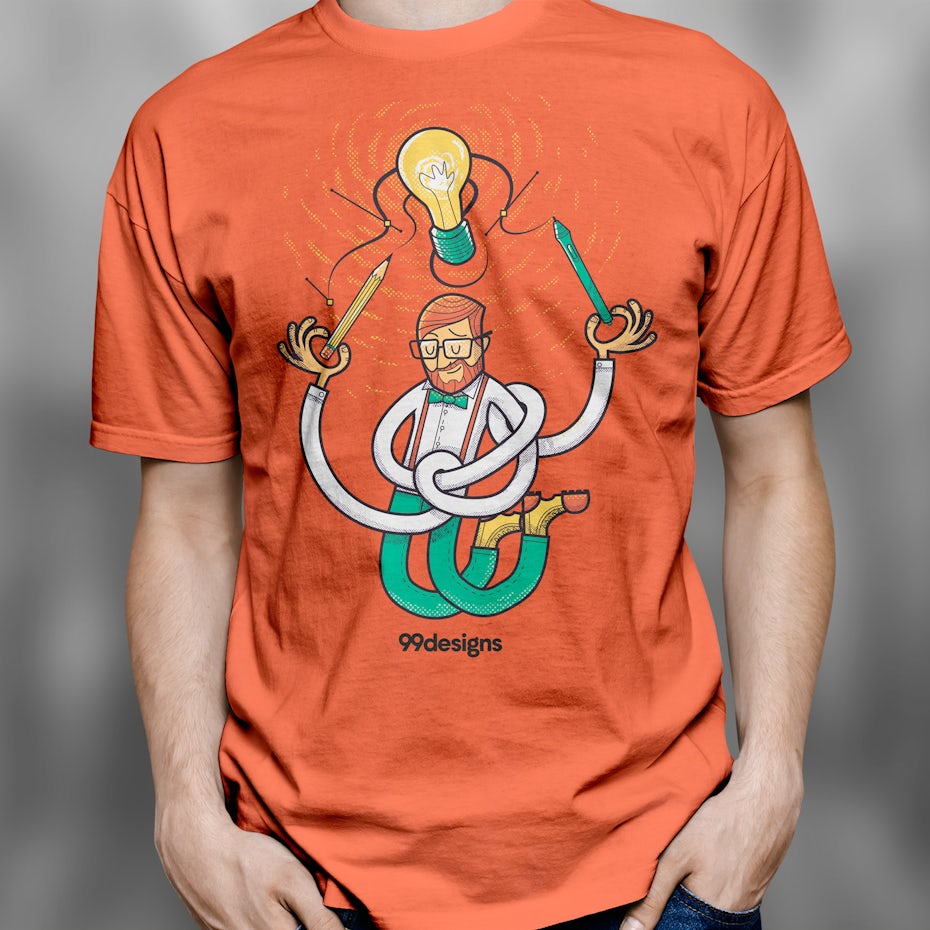
- Find out if the printer has an in-house art department. Not only does this mean the printer does in-house prints, but it usually means these folks do good work. Only successful printers can sustain an in-house art department.
- Request samples of finished shirts, not design images. Most printing companies love visitors! Stop by their shop to see and touch their shirts. Remember: a printer's job is to translate design to an actual print, and only a finished product reveals that.
- Start building a working relationship with a printer you can grow with. Find a printer who prints six or more colors. Even if you don't need that many for your first project, you might need them later.
- If you're doing a larger order, make sure your printer offers pre-press proofs. You won't know for sure how the design fits on the shirts until you see a sample.
- Beware hidden charges, particularly with screens, films or Pantone color matching. Just like any other industry, there are a few rotten eggs. Go over all the charges before payment to make sure they're being up front.
Time to design an amazing t-shirt!
—
Every year t-shirt design and printing are becoming more and more accessible. They're something every business can take advantage of… as long as they know what they're doing. We hope this guide on how to design a t-shirt gave you everything you need to break into the world of making t-shirts. Got questions? Ask them in the comments below.
Looking for the perfect custom t-shirt design?
Work with our talented designers to make it happen.
Make My Own Design on T Shirt Mass Prints
Source: https://99designs.com/blog/design-other/how-to-design-t-shirts/